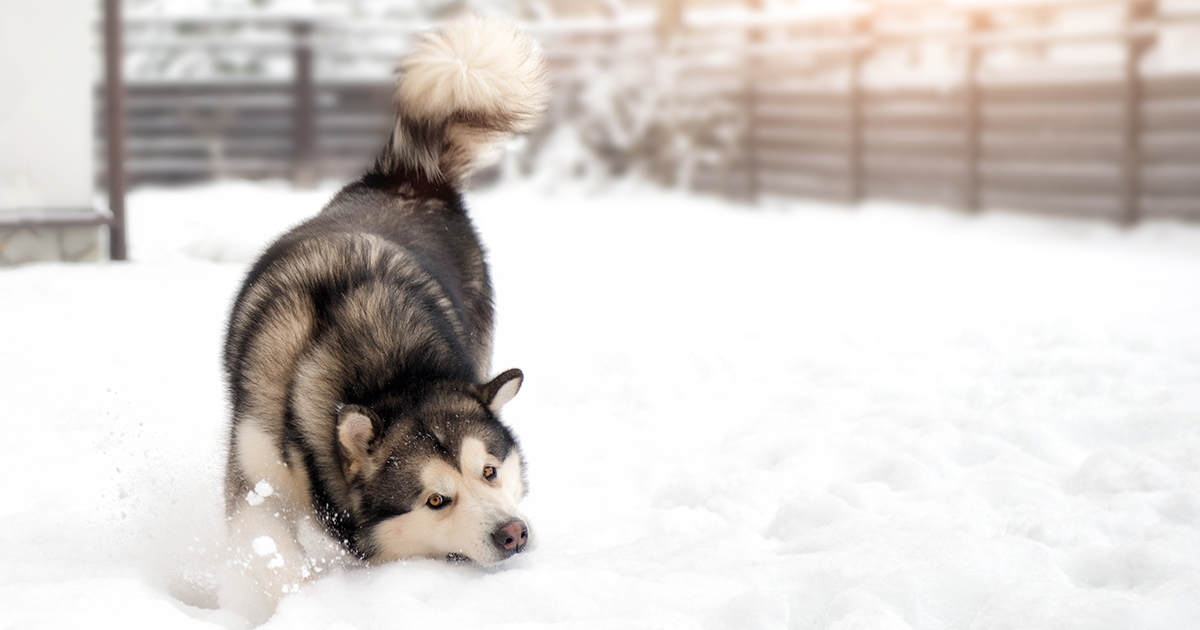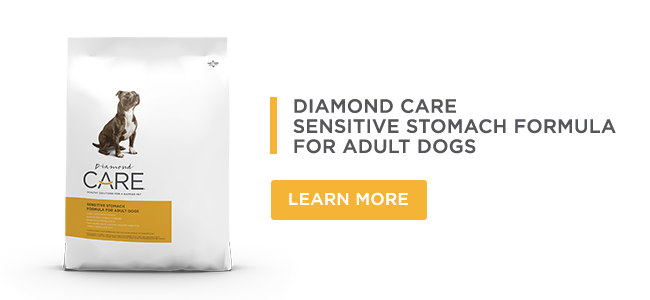To some dogs, new-fallen snow is a blank canvas, asking for zigzagging tracks and the canine version of snow angels. But other dogs see it as a giant sno-cone, beckoning their tongues like glistening sugar.
What’s the attraction?
No one can say what, exactly, compels dogs to lap up the frozen white stuff. Maybe your dog is simply thirsty, or maybe the snow is fresher than what’s currently in their water bowl. Perhaps he or she likes the granular texture or the refreshing sense of something cold melting on the tongue. It could even be a throwback to a Northern-breed ancestor that relied on snow to stay hydrated.
And do dogs get an ice cream headache or brain freeze when they indulge in snow? No one knows for sure.
Fresh, clean snow is good, clean fun
As a rule of thumb, if the snow is fresh enough for you to catch it on your tongue, it’s probably fine for your dog to lap it up in small quantities. After all, it’s essentially crystalized water.
The only real danger with fresh snow is if your dog eats too much of it. Gobbling up large quantities of snow could trigger vomiting, like what can happen when dogs gulp too much water at once. It could also lower your dog’s core body temperature, making it more difficult to stay warm when the temperatures are already chilly.
If your dog obsessively overindulges in snow, it may be a sign of an underlying health problem, such as diabetes, a kidney condition or Cushing’s disease. Consult with your veterinarian if you suspect something serious.
Be cautious about the deep dive
Fresh snow, on the surface, may be fine, but if your dog likes to bury their snout deep into the snow, you need to be concerned about what they can find there. Rocks, sticks, moldy vegetation and trash could be choking hazards and lead to gastrointestinal upset or other problems.
Don’t eat yellow snow
Obviously, you don’t want your dog to eat dirty snow. Keep your pooch from lapping up snow on sidewalks or roads, or from piles created by snowplows. There’s a good chance that snow is contaminated with sand, gravel, antifreeze, salt and other ice melts.
Ice melts contain ingredients such as sodium chloride (salt), potassium chloride, magnesium chloride, calcium salts and urea. These ingredients can be irritating to your pup’s paws, and even if your dog doesn’t eat snow, they can be exposed to these chemicals if they lick their paws when they return home. Ingestion of small amounts of ice melts can result in gastrointestinal upset, but eating snow containing large amounts of these substances could result in a life-threatening situation.
How to keep your dog safe
In most cases, eating a small amount of fresh snow won’t do your dog any harm. But it’s always best to prevent a problem in the first place than to deal with an emergency later. For your pet’s safety:
- Keep your dog on a leash when walking in snow
- Find comfortable booties to protect your dog’s paws from ice-melt chemicals
- If your dog isn’t into booties, make sure to rinse and dry their paws after a walk
- If possible, avoid walking in areas treated with ice melts
- Keep your dog’s bowl full of fresh drinking water
- Bring high-value treats to distract your dog from diving into snowbanks
With the right precautions, you and your dog can still dash through the snow and make the most of your winter wonderland.
RELATED POST: ANTIFREEZE: A DEADLY DRINK FOR THE UNWARY DOG








